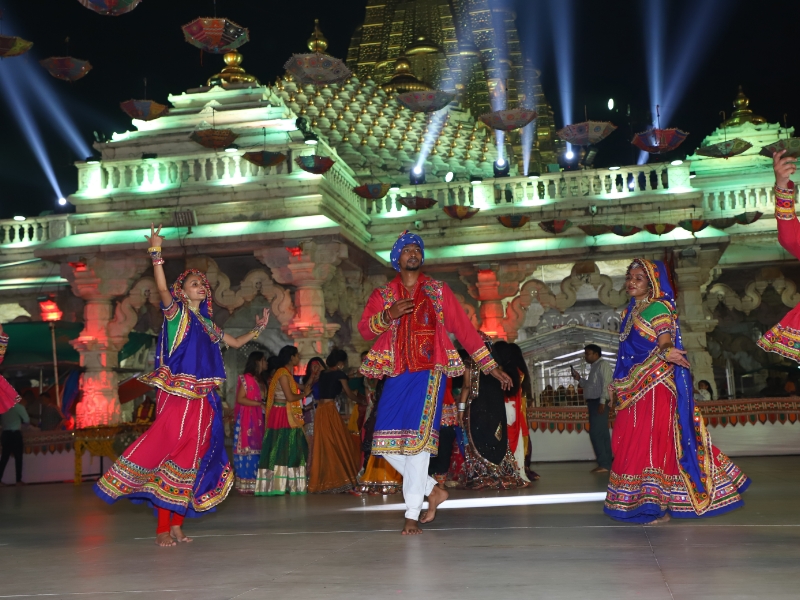

There are many more mythological stories revolving around Navratri relating to famous legend Sati, and Ramayana to name a few. There are four similar festivals, also called Navratri, which are held at various stages of the year. However, the early autumn festival, called Sharad Navratri observed in Hindu Lunar month called Ashwin (Mostly falling in September/October) is the most significant amongst all. Forms of shakti worshipped during this festival include Durga, Bhadrakali, Amba, Annapoorna Devi, Sarvamangala, Bhairavi, Chandika, Lalita, Bhavani and Mookambika, respectively. Navratri is celebrated differently in India’s various regions. For many people it is a time of religious reflection and fasting, while for others it is a time for dancing and feasting. But the Sharad Navratri celebrated at Gujarat is considered as one of the most vibrant and festive celebration of it across the country.
The festival symbolises the triumph of good over evil. As per the mythology it is a major festival held in honour of the divine feminine.Demon Mahishasur honored a boon to be immortal by God of Fire. As per the boon, Mahishasur wouldn't be killed and wounded by any weapon. As a result, he became so powerful that he created a terror in the mind of people and caused destruction. To end the terror of demon Mahishasur, all the deities went to Lord Shiva to find a solution. Lord Shiva along with the power other divinities created goddess Adhya Shakti. All the gods and goddesses, including Lord Shiv, gave her ornaments, weapons and lion as a vehicle to fight against the Mahishasur. Goddess Adhya Shakti fought against Mahishasur for nine long days and night. On the tenth day, she beheaded Mahishasur. The nine nights came to be known as Navratri while the tenth day was called Vijaya Dashami.
It is the most loved dance festival here in Gujarat. Each and every residential colony, plots, and big grounds are converted in to a Garba ground. Garaba is an ancient Gujarati dance form loved and performed by every Gujarati to celebrate Maa’s victory over the evil. Garba is not just a dance form but the music of Garba, the special dresses and accessories made of silk, glasses, golden and colourful threads with beautiful designs worn while playing Garba creates a very divine energy for not just participants but the viewers as well. Some special dance performances using swords, umbrellas, and mud pots with diyas are also performed by trained dancers. This highly energetic environment continues for 9 nights and extends to the 10th day known as Dussehra. For all these 10 days morning and evening Aarti too is very heart touching experience.


Why it is must to celebrate this Festival: Worshiping a goddess who powerfully demolish a devil in a unique way is definitely an experience worth vouching for. In addition to Aartis and Pujas, fasting and special fasting food, environment created by Garbas and Dandiyas are the life time memory for the soul of any individual. Watching hundreds and thousands ‘khelaiyas’ (Garba players) decked up in beautiful traditional attires dancing on the tunes of heart thumping Garba music is just another kind of meditation one must experience for once in life. How to reach there: Garbas are best organised, participated and performed at Ahmedabad. Every year Gujarat Tourism organises Navratri celebration for every Garba enthusiast from not just India but from any part of the world.